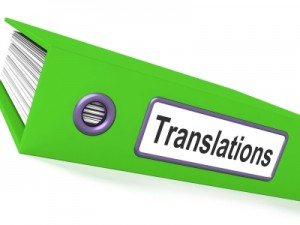It is far more common for translators to quote a per-word rate to their clients than an hourly rate. Yet hourly rates still persist in some particular cases. There are many reasons why per-word pricing is the norm and preferred by both clients as well as translators and translation agencies. Chief among these is that clients can better calculate costs. It’s much more difficult to get an idea of how much a translation will cost when all you know is an hourly rate, and not necessarily how long it will take to finish. And it’s particularly helpful when comparing the rates of one translator to another, when it can be difficult to accurately gauge how quickly each would complete projects relative to their rates.
Per-word rates also provide an incentive for translators to work quickly and efficiently, which is also better for the client. But it benefits the translator, too, as they can ultimately be more productive and earn more with their work. It may also encourage the use of tools to help increase efficiency. Yet despite the benefits, there is still another side to the coin for translators. Some documents may take much longer to complete, due to legibility issues or a higher difficulty level of the content. Charging by the word, in these cases, can benefit the translator less as their per-word rate undoubtedly would have taken into account how quickly they can translate. In these cases, some people choose to include a rate specifically for editing which is per-hour rather than per-word.
One thing that newbie translators, or those branching out to do independent work, should remember is that there is a difference between source word and target word rates. The former refers to a rate based on the number of words in the original document, while the latter refers to the number of translated words upon completion. Different agencies and freelancers may choose to go with one or the other. But it is ultimately more convenient for the client to be quoted a per-source word rate. Why? It lets them know exactly what the cost will be before you even get started.
The final thing to take into consideration when deciding how to charge your clients is whether to go with a per-page rate. It is not uncommon to receive a fax (even these days) or a scanned version of a document that cannot be easily converted into text. This kind of rate is less common than the more popular per-word rates or hourly rate. Which rate works for you will depend on the type of work that you typically receive.
However, charging per page is different than the page rate that some agencies and freelancers quote, which often is a way of referring to a set amount of words (for example, 200 words per page.) So it’s always important to be clear what you mean by “per page” (physical page or predetermined number or words) and “per word” (source word or target word) when negotiating rates.













